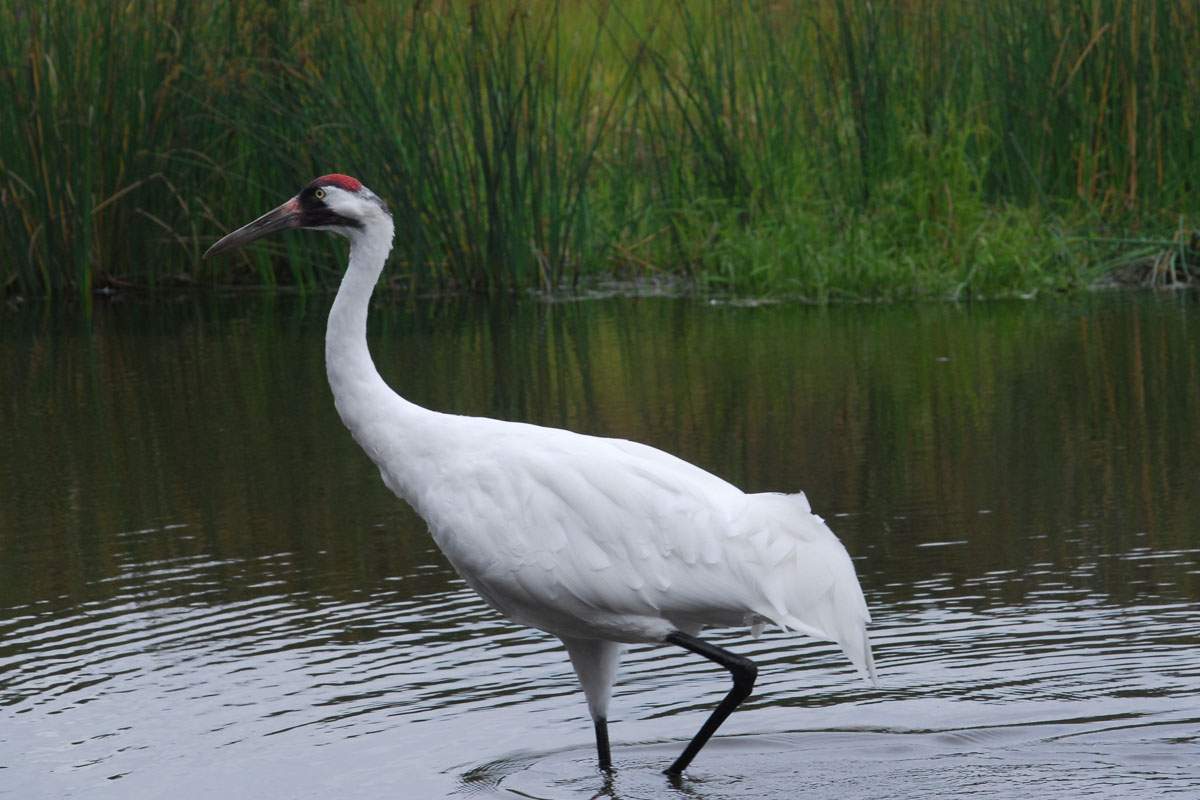
We all know that outside the world of Sesame Street, big birds can't talk. However, our own big bird, the five-foot tall Whooping Crane, can communicate in a variety of other ways.
Their inability to talk doesn't mean that the tall white birds are silent. Thanks to specialized looped windpipes, their calls can be heard for miles in their wetland homes. Often, a mated pair will call simultaneously, a behavior known as unison calling. These calls allow the male and female to strengthen their pair bond and tell rival cranes and other potential threats they need to give the pair some space.
If an intruder gets close, the cranes may turn to more visual displays. Whooping Cranes' heads are crowned with a patch of bare red skin. Cranes warn encroaching individuals that they are too close by tilting their heads down to display this patch. They can also direct more blood flow to it, making the red brighter and the patch larger. More visible red means an angrier crane.
But not all crane communication is aggressive. Whooping Crane pairs, which mate for life, participate in a spectacular dancing display. They bow to one another, spread their wings, toss bits of grass or sticks above their heads, and jump high into the air.
We believe this dance reaffirms their pair bond, which must be strong for the couple to defend a territory and successfully raise chicks. Dancing and playing also may serve as a way for cranes to blow off steam, and reduce stress levels. They also may dance because it's just plain fun.
Sources And Further Reading
- Alexander, J. In ‘My Life with Cranes,' George Archibald Recounts an Incredible Career in Conservation. Audobon, August 30, 2017.
- International Crane Foundation
Â









